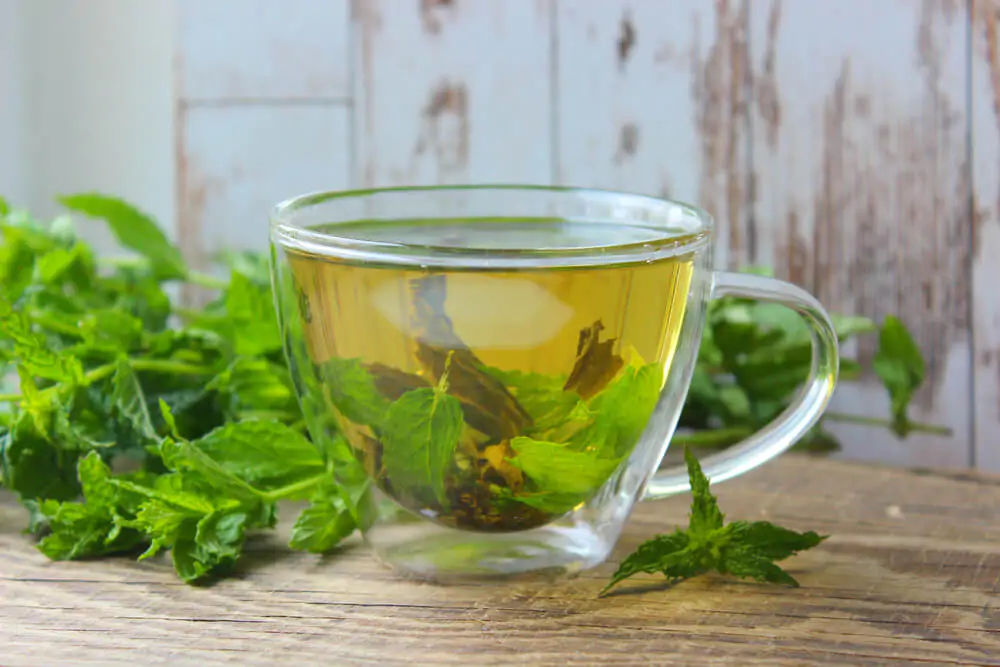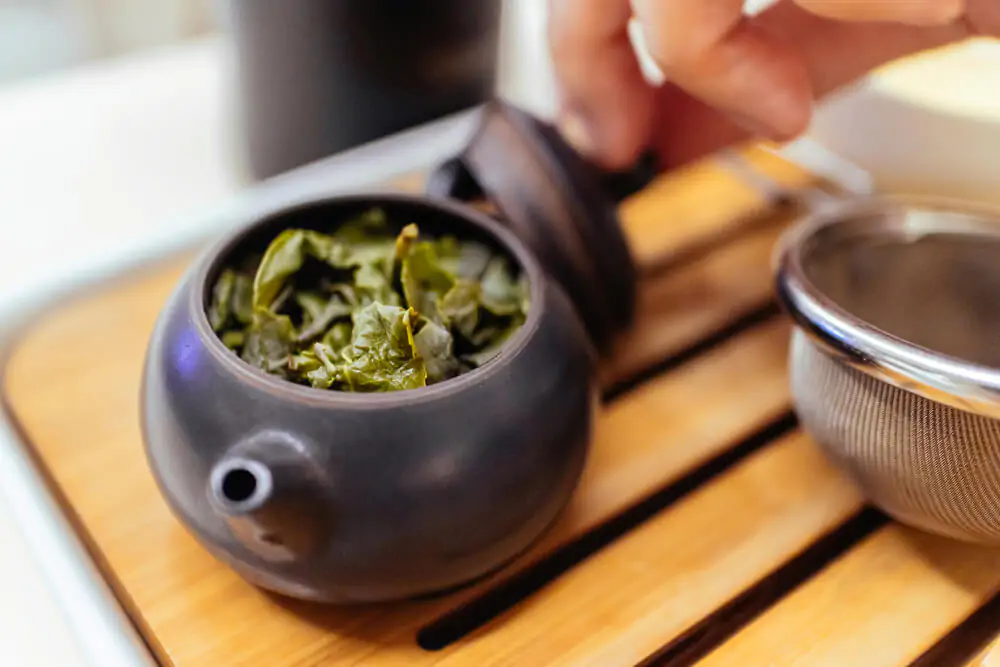Spearmint tea has been the most significant support to treat acne for the past four months. So what is spearmint tea, and what’s so special about this herbal drink?

With a pleasant smell with an incredible cooling effect, a cup of hot spearmint tea every winter morning helps me get out of bed on the right side. Spearmint tea, also known as Mentha spicata, is a refreshing herbal tea made from spear-shaped wrinkled green leaves.
The therapeutic properties of this caffeine-free tea also boast a wide array of health benefits that can help you relax, manage polycystic ovaries syndrome (PCOS), soothe congestion, and control the menstrual cycle. Dig into this comprehensive guide to learn more about its tasting profile, preparation, and side effects.
Is Spearmint Tea The Same As Peppermint Tea?
Peppermint and spearmint belong to the same biological genus. However, spearmint tea tastes less minty than peppermint tea, with an outstanding sweet note.
If we’re talking about the tasting profiles, spearmint can is a lighter version of peppermint tea. And that’s a good thing for me as I can drink it every week without feeling overwhelmed by the sharp and minty flavor. This is because the amount of menthol in spearmint is less than that of peppermint; instead, spearmint tea has a higher concentration of limonene, dihydrocarvone, and cineol.
What Does Spearmint Tea Taste Like?
Subtly sweet, clean, refreshing, slightly minty with a remarkable cooling effect, spearmint tea is a perfect introduction to the mint family. A cup of spearmint tea will wake up your palate with a smooth texture and a soft, less piercing flavor.

The taste of spearmint tea is versatile, depending on the harvest time and preparation. Dried spearmint leaves don’t have a significant bitterness compared to fresh ones.
If you like spearmint tea, you might also find our explainer on pine needle tea helpful.
Health Benefits Of Spearmint Tea
- Spearmint tea is rich in antioxidants, including rosmarinic acid, flavones, limonene, and menthol, which may be the signs of premature aging caused by free radicals.
- The anti-androgen effects of frequent use of spearmint tea may reduce hormone imbalances associated with PCOS.
- Daily intake of spearmint tea can help kill bacteria and reduce inflammation associated with acne.
- Spearmint tea is famous for its cooling effects to ease congestion cure sore throat, and gunky sinuses.
However, I suggest two cups per day for over a month to see changes in your symptoms. Remember that it can take up to two to three months for some people depending on their health conditions.
You may also be interested in learning about Ballerina tea.
Potential Side Effects Of Spearmint Tea
Spearmint tea has some downsides if consumed in large quantities. Some of the most common symptoms are vomiting and diarrhea. Drinking spearmint tea during pregnancy may help with vomiting and nausea, but it should be supervised by doctors.
As a healthy woman in her mid-20s, I’ve been drinking one to two cups of spearmint tea every day, and it works perfectly for me. My painful cystic chin acne problems have significantly improved over the past few months. Therefore, I recommend starting with one teabag per day if you’re new to spearmint tea and gradually moving on to two cups a day.
You might also find our guide on rose tea helpful.
How To Make Spearmint Tea

I always start with dried spearmint leaves. You can find it in many specialty tea shops, where they also have it available in teabags.
Here’s how I prepare spearmint tea at home:
- First, boil about 500 millimeters (~17 oz) of water.
- Turn off the heat and pour it over torn, dried spearmint leaves in a cup.
- Let it sit for five minutes until the infusion has a shiny, golden color.
- Get rid of the leaves using a strainer and consume.
